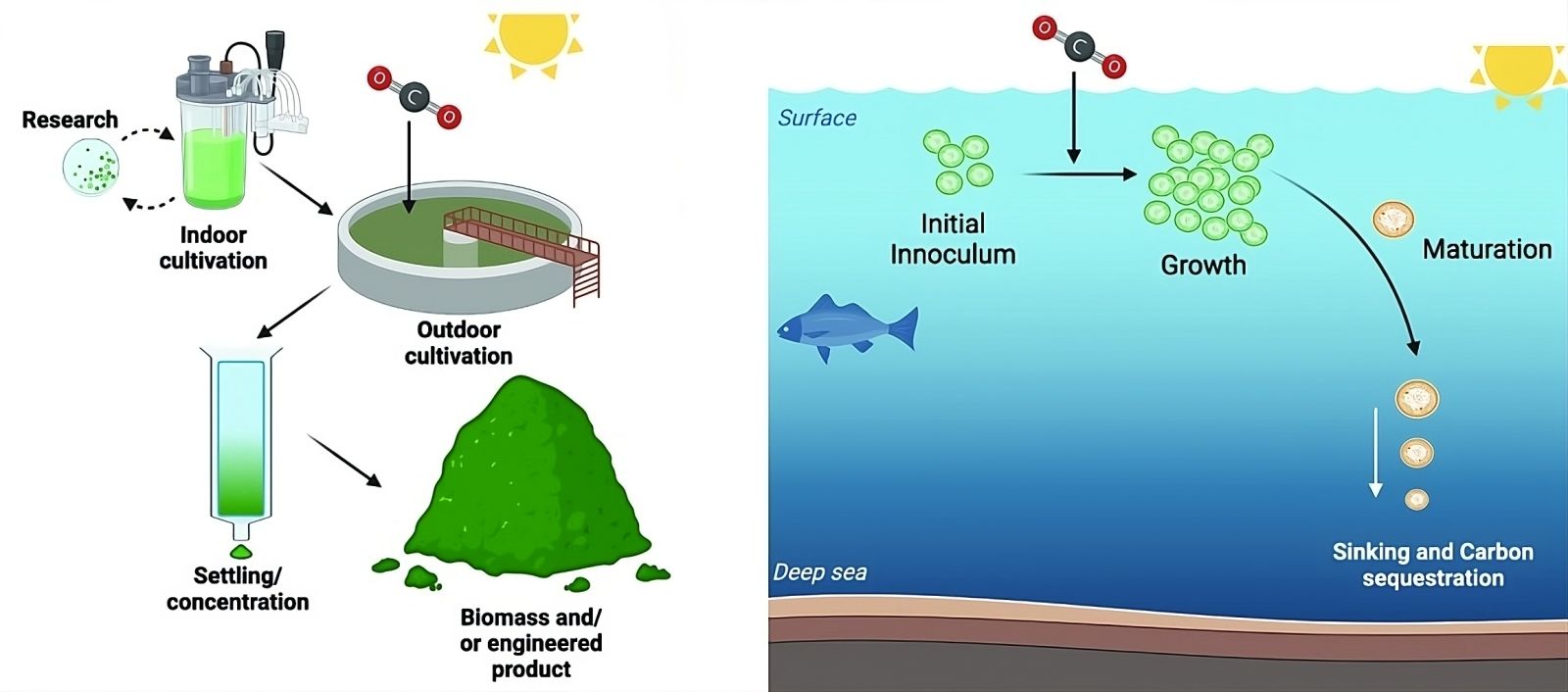This bacterium is a true "carbon vacuum" 🦠
Published by Cédric,
Author of the article: Cédric DEPOND
Source: Applied and Environmental Microbiology
Other Languages: FR, DE, ES, PT
Author of the article: Cédric DEPOND
Source: Applied and Environmental Microbiology
Other Languages: FR, DE, ES, PT
Follow us on Google News (click on ☆)
Applied and Environmental Microbiology reports that this microalga, originating from underwater volcanic vents, could transform our approach to decarbonization. For billions of years, cyanobacteria have played a key role in oxygen production. Today, some are proving to be useful in capturing carbon.

Left: Diagram showing how strains, growing rapidly in the lab, could be used to more easily produce biomass or useful products.
Right: Diagram explaining how sinking phytoplankton can help store carbon in deep ocean sediments.
Immersed in optimal conditions, Chonkus stood out for its rapid growth and ability to form dense colonies. These carbon "pellets" sink to the bottom of the water, making sequestration more effective and scalable. Researchers point out that this characteristic simplifies its industrial use. These microorganisms could produce compounds such as omega-3 or spirulina while reducing CO2 emissions.
Chonkus hails from the gas-rich waters around the island of Vulcano. Researchers are now exploring other carbon-rich environments to identify similar microbes. Unlike costly genetic modifications typically done in laboratories, the approach here focuses on harnessing the natural capabilities of organisms that have evolved in specific environments.
The future of this solution rests on a twofold promise: slowing climate change while producing valuable resources. Chonkus illustrates how marine biodiversity could become an ally in the race for carbon neutrality.
What is a cyanobacterium and why is it important?
Cyanobacteria are single-celled microorganisms capable of photosynthesis, a process that uses sunlight to convert carbon dioxide (CO2) into chemical energy. They are among the earliest life forms that began producing oxygen over 2 billion years ago.
Today, their ecological role is essential: they help fix atmospheric carbon and produce a significant portion of the Earth's oxygen. Some, like Chonkus, stand out for their ability to efficiently sequester CO2, offering potential solutions to mitigate the effects of climate change.
Often referred to as blue-green algae, these organisms thrive in diverse environments: oceans, lakes, soils, and even extreme habitats. Their genetic and functional diversity makes them a promising tool for applications ranging from biotechnology to industrial decarbonization.
What is carbon sequestration and how does it work?
Carbon sequestration refers to the process by which carbon dioxide (CO2) is captured and stored long-term. This mechanism aims to reduce concentrations of this greenhouse gas in the atmosphere to limit climate change.
Sequestration can be natural, like with trees, soils, and oceans, which naturally absorb CO2, or artificial, via technologies that capture this gas either directly from the air or at the source of emissions, before storing it in underground or underwater reservoirs.
In the case of cyanobacteria like Chonkus, sequestration relies on their ability to absorb dissolved CO2 from water to grow and produce dense structures that sink. This offers a natural and effective method for trapping carbon in the ocean floor.